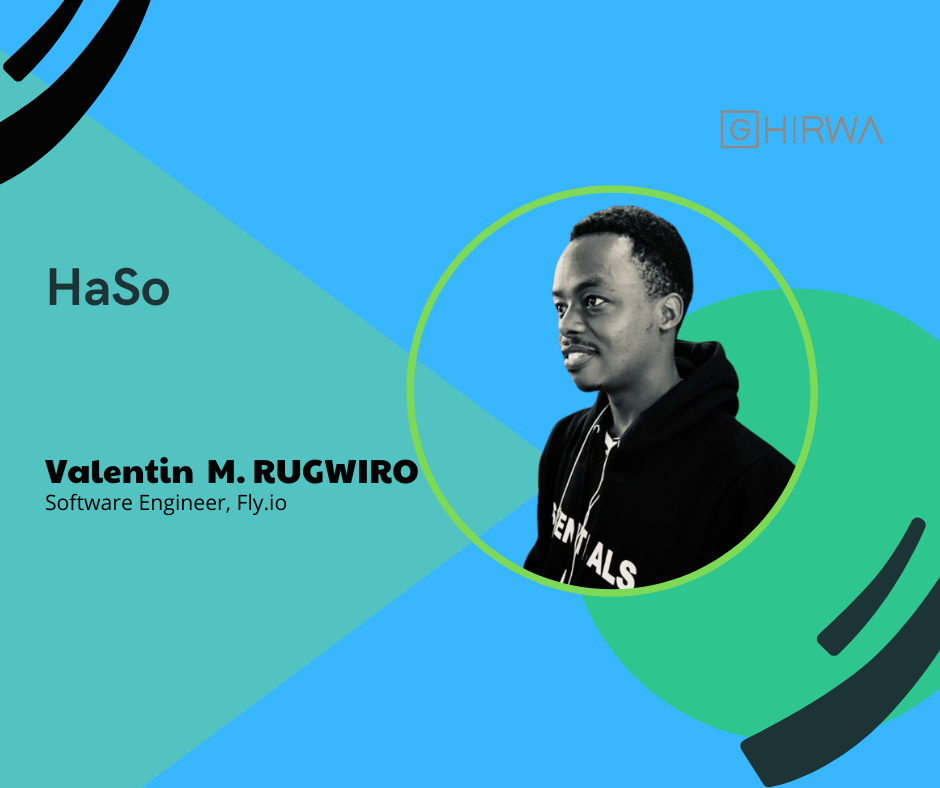In the booming world of software engineering, few stories are as inspiring as that of Rugwiro.
A passionate and driven Software Engineer , Valentin Rugwiro’s journey from a fascination with math and science to making a real impact through technology is nothing short of remarkable.
During our interview on October 28, 2021, Rugwiro shared his experiences, from his early love for programming languages like Python and Go to his exciting work at Fly.io, where he turns innovative ideas into reality.
He spoke about his successful projects, the challenges he faced, and the invaluable lessons he learned along the way. Whether you’re just starting in software development or you’re already a seasoned professional, Rugwiro’s story offers a wealth of knowledge and inspiration.
Join us as we explore the thoughts and experiences of a tech enthusiast who continues to push the boundaries of what’s possible in the world of software engineering.
Let’s get into it!
GH: Why did you decide to become a Software Engineer?
VR: I was always into math and science since forever. And computers offered me a shot at wrangling with electrons to create something out of almost nothing and from there I thought I could actually make an impact in people’s lives while having fun Tony Stark style.
GH: What programming languages do you prefer?
VR: Go is my most used language and my favorite. I’m currently learning Rust and it’s hard but I love it. It feels like the natural next step coming from a couple of years of Go. I still like Python 2 since It was my first language. And I’d like to have a deeper look at C when the time allows it.
GH: Talk about a project that you completed successfully
To be honest most projects I completed are proprietary. All I can say is that I learned a lot from the things I built at Quarks Group. However, I learned even more working on open source projects and so I decided to open-source some of my own projects. They are kind of unfinished but they represent a big step in my career. Starting with Larissa where I was learning all about abstractions and moving forward to Toaster where I’m learning about both compilers and database engines(They say that at some point in a software engineer’s career every problem starts to look like it can be solved by either of the two. I want to see if that is true). Other projects can qualify as me scratching my own back and then trying to show other people how to do the same. That applies to Platypus which is like a USSD options navigator library that basically helps bootstrap USSD app without the hassle. It was my first time dealing with USSDs and finding any public knowledge about it was very painful.
Platypus is just me trying to reduce the pain for other people
GH: Tell us about Fly.io
VR: Fly.io is a platform for running full-stack apps close to your users. If you want to go down this rabbit how with me fly.io transmogrify docker containers into Firecracker micro-VMs that run on our hardware around the world, and connect all of them to a global anycast network that picks up requests from around the world and routes them to the nearest VM
GH: How did you join Fly.io?
VR: Did the explanation above sound like a catchphrase or pitch? Well, it caught me. I was looking around for a Heroku alternative for a project I was working on when I found about fly.io on Twitter,
I’ve always wanted to build my own app platform and fly.io looked like everything I had dreamed about and on top of that they had a blog about how they do it. So I started reading the blog
GH: How do you keep your skills sharp and up to date?
VR: Ohhh, there are so many opportunities at fly.io. Building an app platform is such a broad problem I just have to ask myself and my team the right questions. For example, right now I’m so into databases and the database expert at fly.io can definitely feel the heat cause I have so many questions. Sometimes I theorize about something either after I have encountered a problem(or a customer) and deploy some code to test it and I go to the person I know has experience dealing with it with my conclusion for validation. Other times I just read a book(Currently I’m reading this pair “Database Internals” by Alex Petrov and “Designing Data-Intensive Applications” by Martin Kleppmann). Most of the time though, Google is my best friend like so many others before me.
GH: Concluding, An advice to junior developers who wish to work for a global tech firm
VR: I’m not sure I would be the one to give the best advice cause I’m still trying to understand how this happened to me.
Luck is probably the most logical(Yeah I said it luck is logical) explanation. But you gotta try and tilt in your direction. One thing that has always been on my mind even before I joined fly.io is I wanted to work on infrastructure(forgive the ambiguous terminology), either I was getting a job or I was going to start my own company. But while waiting for either to happen I turned to open-source to learn by first watching(companies like Hashicorp, Equinix metal, …) and then trying to imitate either by contributing to projects or trying to reproduce. The other thing is you need to be bold, DM the Kelseys and the Sarah Edos, talk to your favorite companies’ CEO about their product and tech and make sure they are side-eying you even before you land an interview. In other words, shoot your shot.
CHECK ALSO: Haso: Boris Kayiranga – Senior Software Engineer based in Berlin

